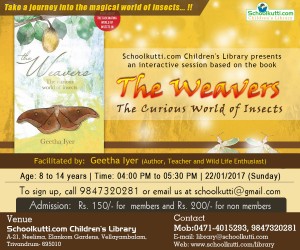Daily Archives: January 14, 2017
Celestial Wonders – Session 2
Today’s topic in the ‘Celestial Wonders’ program was ‘Discovering the Milky Way’. Here is a quick look at few of the discussions we had.
How can we see the milky way if we are inside it? Isn’t it like trying to take a picture of the outside of your house while being IN your house? Because we are inside the Milky Way, we don’t get to take any pictures of it from an angle above it, but we only get pictures in which we see the structure of the Milky Way edge-on, from inside of it.
Exactly how far is an object when we say that an object is light years away? What do we understand when we look at objects that are light years away through a telescope? It was interesting to learn that the distance to Proxima Centauri is only four light years. However, it takes the light from our stellar next door neighbor four years to get to Earth.
We talked about dwarf galaxies, which are small galaxies composed of about 100 million up to several billion stars, a small number compared to the Milky Way’s 200–400 billion stars. Our milky way is expected to now grow mainly by eating smaller galaxies, rather than by collecting gas.
It was quite interesting to find out how the radiation from the sun reaches the earth. The magnetic field around earth protects our body’s DNA from being affected by this radiation. A very small change in our DNA can even affect the way we look.
Children were also curious to know how the planets, moons and asteroids in the Solar System were formed. After debating over some interesting theories and watching informative videos, we came to the end of the session.
The Weavers – The Curious World of Insects
Did you know…
– Dance flies of the family Empididae have been courting their mates for eons by presenting them with silk-wrapped prey as nuptial gifts.
– There are at least twenty-three different categories of silk, each the result of natural selection and an independent evolutionary pathway.
– Some moth-caterpillars will walk only on a path of silk, leaving human monarchy a tad inferior surely.
– Silk is an excellent material for select surgical procedures.
Schoolkutti.com Children’s Library is conducting an interactive session based on the book ‘The Weavers – The Curious World of Insects’ by Prof. Geetha Iyer (Author, Teacher and Wild Life Enthusiast) for children of age 8 to 14 years on January 22nd Sunday. Since life evolved on this planet, there have been six major extinctions and insects – since their arrival 400 million years ago – have been amongst them! How did they survive when species after species went extinct? In a world that is fast collapsing to global warming and climate change, there is now an increased interest in knowing the secrets of insect survival. With silken thread forming the central motif, The Weavers brings together little-known aspects of insect life.
Geetha Iyer is an ardent wildlife watcher, naturalist, author, teacher, and consultant in the twin fields of education and environment. A Zoology graduate with a Ph.D. in Education from Madras University, she has several years of experience in the area of designing and executing science and environment education curriculum. She enjoys writing about bringing biodiversity into the classroom and regularly conducts workshops about the environment, education and natural history.
Venue: Schoolkutti.com Children’s Library, Trivandrum
Dates: Jan 22 (Sunday)
Time: 4 to 5:30 PM
Fee: Rs. 150/- for members and Rs.200/- for non members
Call 9847320281 or 4015293 for more information.
Click here to register
http://schoolkutti.com/events/schoolkutti-events-details.php?id=110&districtId=1





